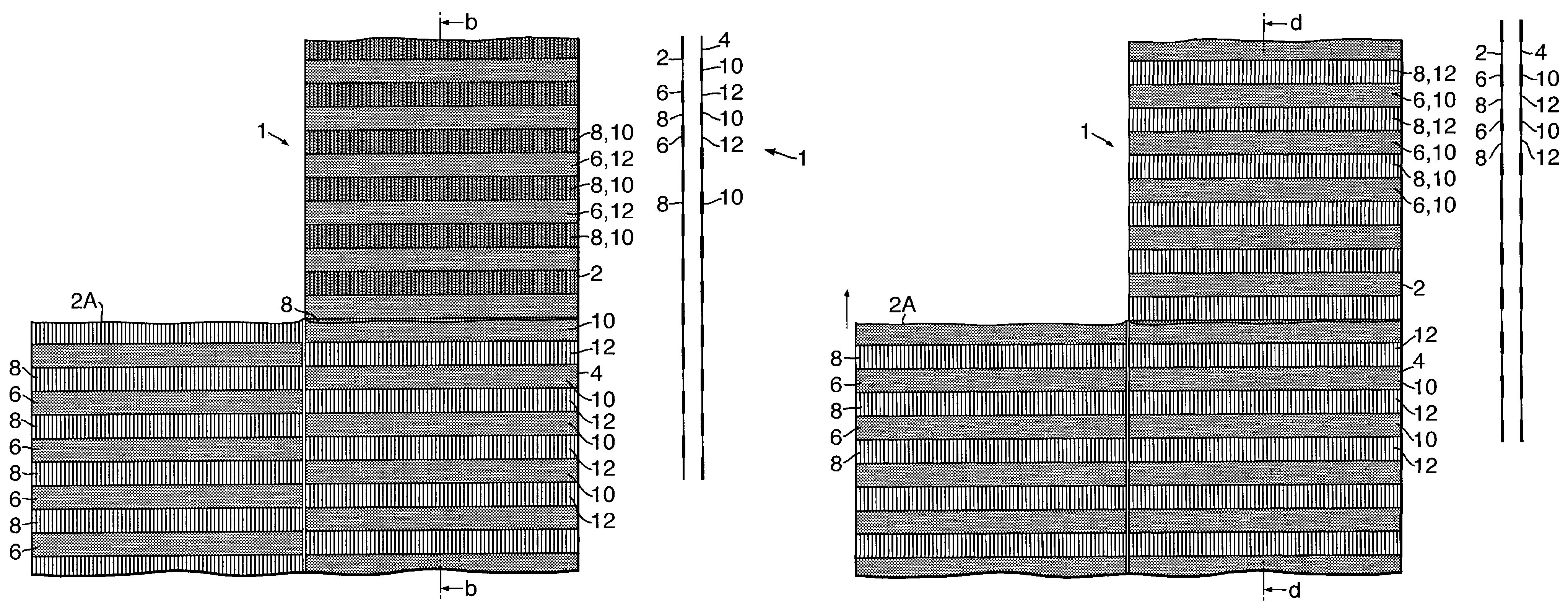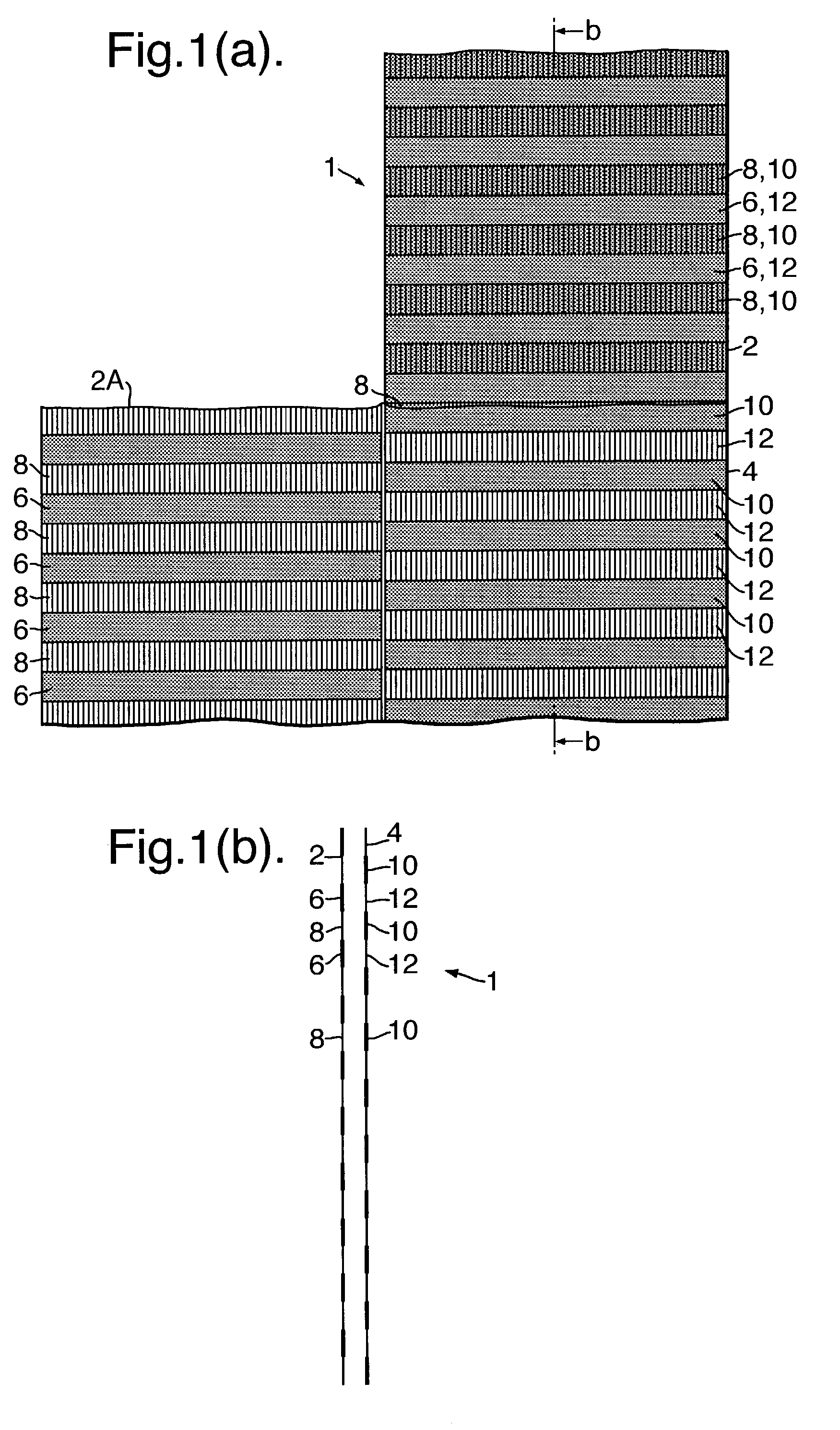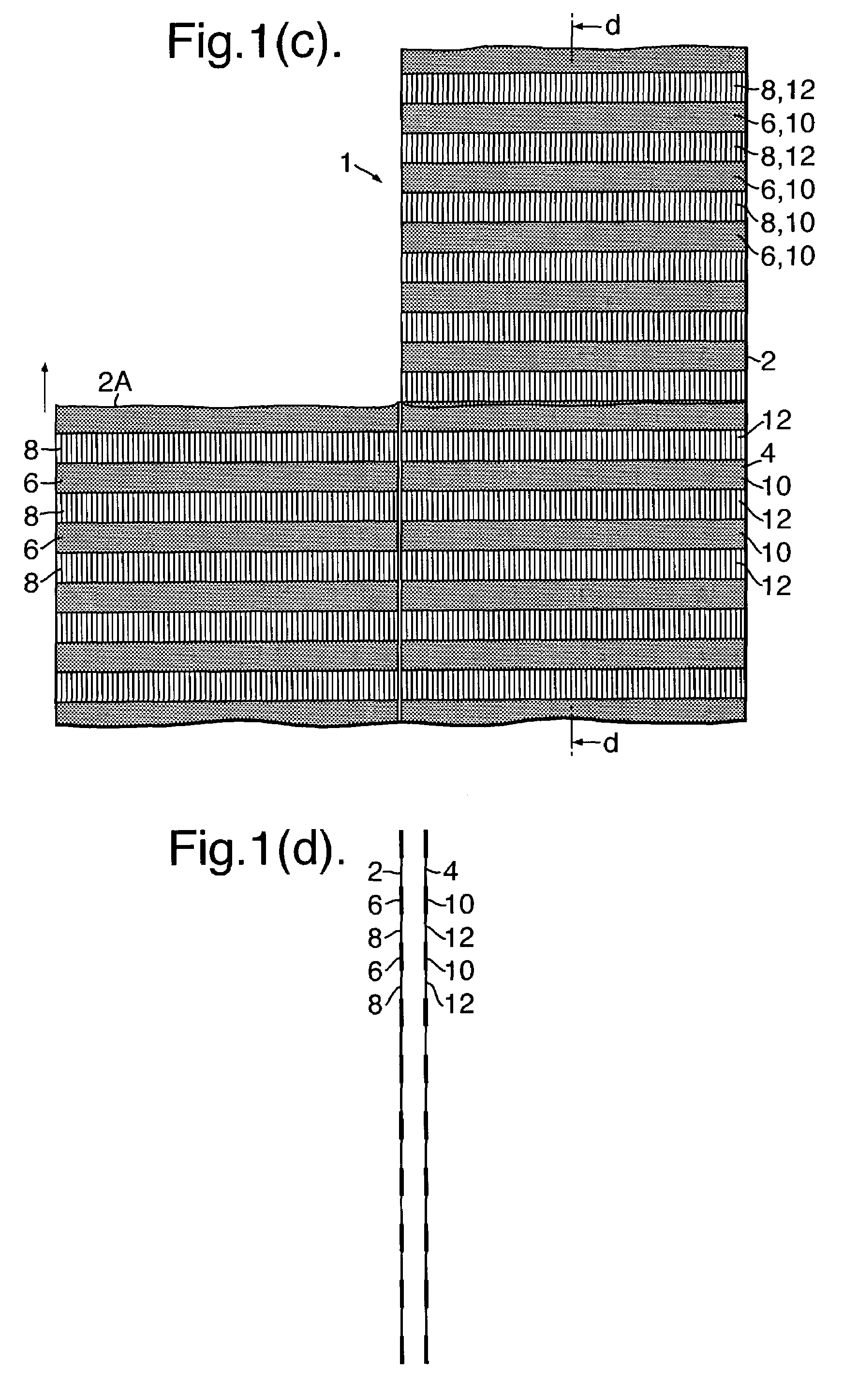Architectural covering
a technology for buildings and coverings, applied in the direction of door/window protective devices, curtain suspension devices, shutters/movable grilles, etc., can solve the problems of separating the two layers, blinds not being able to completely close, blinds appearing bulky,
- Summary
- Abstract
- Description
- Claims
- Application Information
AI Technical Summary
Benefits of technology
Problems solved by technology
Method used
Image
Examples
second embodiment
[0046]FIGS. 2(a) and (b) show a fabric blind 101 which is similar to the blind 1 of FIGS. 1(a)–(d) and for which corresponding reference numerals (greater by 100) are used below for describing the same parts or corresponding parts. The relatively opaque stripes 106 of the front layer 102 of the blind 101 can be horizontally aligned with the relatively translucent stripes 112 of its rear layer 104 to close the blind as shown in FIG. 2(a) and can be horizontally aligned with the opaque stripes 110 of its rear layer 104 to open the blind as shown in FIG. 2(b). This fabric blind 101, when closed, can easily be printed on both the opaque stripes 106 and the weft threads of the translucent stripes 108 of its front layer 102, as well as on the opaque stripes 110 of its rear layer 104 (between the weft threads of the translucent stripes 108 of the front layer), by conventional transfer printing techniques. Thereby, the closed blind 101 will show the complete printed design, and the opened b...
third embodiment
[0055]FIGS. 4(a)–(c) show a fabric blind 201 which is similar to the blind 1 of FIGS. 1(a)–(d) and for which corresponding reference numerals (greater by 200) are used below for describing the same parts or corresponding parts. In this regard, the stripes 206A, 208A, 210A, 212A at the bottom of the blind 201 are vertically narrow, and the stripes 206B, 208B, 210B, 212B at the top of the blind are vertically wide. The opaque stripes 206A, 206B of the front layer 202 of the blind 201 can be horizontally aligned with the translucent stripes 212A, 212B of its rear layer 204 to close the blind as shown in FIG. 4(a) and can be horizontally aligned with the opaque stripes 210A, 2101B of its rear layer 204 to open the blind as shown in FIG. 4(b). As shown in FIG. 4(c), the narrow opaque stripes 206A of the bottom of the front layer 202 can be aligned with the narrow translucent stripes 212A of the bottom of its rear layer 204 to close the bottom of the blind while the wide opaque stripes 20...
fourth embodiment
[0063]Shown in FIG. 7 is a fabric blind 301 which is similar to the fabric blind 1 shown in FIGS. 1(a)–(d), 3(a)–(b), 5 and 6(a) and for which corresponding reference numerals (greater by 300) are used below for describing the same parts or corresponding parts. The blind 301 is woven, starting with a complete set of warp and weft threads 320 and 322, forming front and rear, opaque stripes (not shown) and front and rear, translucent stripes (not shown). The warp threads 320 are divided into front and rear sub-sets 320a, 320b, with a width and height measured in the weft direction, and by weaving these warp thread sub-sets with front and rear, weft thread sub-sets 322a and 322b, the front and rear layers 302, 304 are formed. One or more binder threads 314 are woven, as extra weft threads 322, into front and rear, warp thread sub-sets 322a and 322b which form the opaque stripes of the front and rear, woven layers 302, 304 of the fabric 301, in order to slidably interconnect the layers....
PUM
| Property | Measurement | Unit |
|---|---|---|
| Electrical resistance | aaaaa | aaaaa |
| Translucency | aaaaa | aaaaa |
| Opacity | aaaaa | aaaaa |
Abstract
Description
Claims
Application Information
 Login to View More
Login to View More - R&D
- Intellectual Property
- Life Sciences
- Materials
- Tech Scout
- Unparalleled Data Quality
- Higher Quality Content
- 60% Fewer Hallucinations
Browse by: Latest US Patents, China's latest patents, Technical Efficacy Thesaurus, Application Domain, Technology Topic, Popular Technical Reports.
© 2025 PatSnap. All rights reserved.Legal|Privacy policy|Modern Slavery Act Transparency Statement|Sitemap|About US| Contact US: help@patsnap.com



